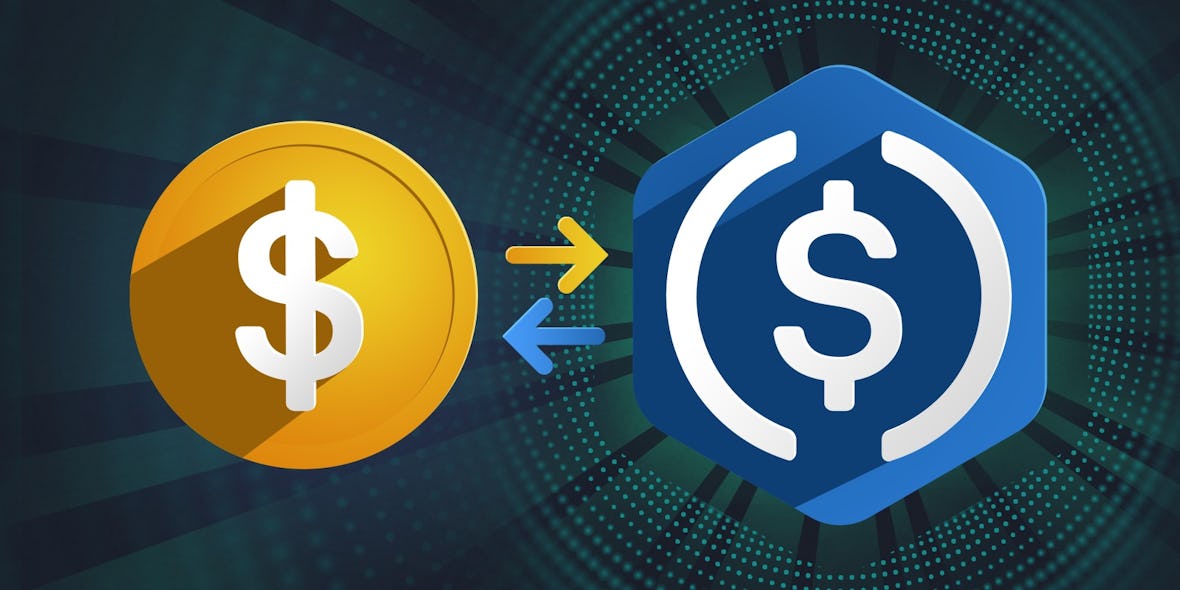When the euro began circulating in 1999, the new currency was weak. Or it was at least weak in terms of the dollar. Soon enough a dollar was exchangeable for 1.2 euros. So rapid was its decline that Goldman Sachs GS -1.4% introduced an investment vehicle whereby its high-net-worth clients could expose themselves to a euro rebound.
Eventually the euro did rebound. In the 2000s the dollar began an ugly decline. Soon enough the euro was buying 1.2, 1.3, and more dollars.
This and more is useful to consider in light of the rollout of cryptocurrencies called “stablecoins.” Here’s how a “stablecoin” is defined:
“any cryptocurrency designed to have a relatively stable price, typically through being pegged to a commodity or currency or having its supply regulated by an algorithm.”
All of which explains why “stablecoin” is put in quotes. A crypto currency made “stable” by its peg to paper currencies is not stable. Almost by definition. Think about it.
From 1971 to 1973 the dollar’s definition as 1/35th of a gold ounce was severed. This is important because global non-dollar currencies were generally pegged to the dollar. Their value was consistent based on their peg to a dollar defined in terms of a gold ounce.
Evidence supporting the previous claim is that currency and commodity markets largely didn’t exist before the 1970s. Why would they? With the dollar defined in terms of a commodity known for remarkable stability, there was little currency or commodity volatility to speak of.
Since 1973, and with the dollar no longer having a commodity definition, currency trading has soared. As a consequence, currency trading is staggering in its scope. There’s roughly $7 trillion worth on a daily basis.
The above number tells you all you need to know about “stablecoin” or “coins.” There’s no such thing. Private currencies pegged to paper currencies like the dollar, euro et al are pegged to paper forms of money that bounce around with some regularity.
See the $7 trillion trading number yet again. If paper currencies were actually stable as measures of value, the trading would be non-existent. In short, a “stablecoin” defined as such because it has a paper currency peg is a rather humongous contradiction.
The same applies to private or “crypto” money that has a strict supply limit. Almost by definition this kind of currency won’t be stable. That’s the case because money is an agreement about value. Much as a foot is useful as a measure because it’s always 12 inches, the only true “money” is that which holds its value throughout time.
With money concepts, you have a choice: either prioritize supply of the concept or the credibility of it as a measure of value. A focus on supply with strict limits is by definition a market communication that the price of the measure will float.
Which brings us to a commodity definition of money. Historically gold defined money not based on randomness, but because the yellow metal’s price has always been incredibly stable thanks to a stock/flow disparity that’s enormous. Gold is the constant.
Stablecoins defined in terms of gold would logically be stable; that is, unless these coins are pegged to the dollar, euro, yen (or name your currency) price of gold. This is an important distinction. In 2001 a dollar purchased 1/260th of an ounce of gold, but as of this writing a dollar purchases 1/1800th of an ounce.
The previous number is yet another reminder of how volatile the dollar is, but also how worthless it would be to peg a currency to the dollar price of gold. There’s no stability to speak of. Truly stable “stablecoins” would have their value measured directly vis-à-vis gold.
And then there’s the regulatory question. Any market activity that has a lucrative quality to it naturally attracts the attention of politicians and regulators. They want to live well too, so it’s no surprise that they would start rumbling about their role in regulating the crypto market. You know how it is, without your federal minders, “stablecoin” issuers would rip you off. Yes, the government that extracts trillions from the private economy each year, and that dips deeply into your paychecks each week, wants to protect you from thieves. It’s hard not to laugh, or cry.
Read original story Forbes


